Introduction
Secured personal loans have become one of the most practical ways to borrow money in 2025 especially for borrowers who want lower rates without perfect credit.
By pledging an asset such as your car, savings account, or investment portfolio, you give the lender additional security. That reduced risk often translates into better terms: higher borrowing limits, longer repayment options, and interest rates well below those of typical unsecured loans.
These loans are frequently used for debt consolidation, home upgrades, medical expenses, or major life events. But like any financial tool, they come with trade-offs. If you fall behind on payments, the lender has the right to claim the collateral you used to secure the loan.
This guide focuses exclusively on secured personal loans how they work, who offers them, and how to choose the right one for your situation. We’ll also look at qualification factors, common mistakes to avoid, and smart alternatives if you’re not ready to pledge an asset.
Key Takeaways
Secured Personal Loans Explained
- Collateral is required: Secured personal loans are backed by assets such as a car, savings account, or investments.
- Lower rates, higher limits: Because lenders face less risk, borrowers often qualify for larger loan amounts and better interest rates.
- Easier approval with fair or bad credit: Collateral increases your chances of approval even if your credit score is below average.
- Collateral risk matters: Missing payments can lead to losing your asset, so borrowing only what you can afford is essential.
- Compare before committing: Terms, fees, and approval standards vary widely between banks, credit unions, and online lenders.
- Alternatives exist: If you prefer not to pledge assets, options like unsecured loans, HELOCs, or credit union loans may fit better.
Disclaimer: This site contains affiliate links. If you make a purchase, we may earn a commission at no extra cost to you.

Secured Personal Loans at a Glance
A secured personal loan is a type of financing that requires you to use a personal asset such as a vehicle, savings account, or investments as collateral. In exchange, lenders typically offer lower rates and higher loan amounts than unsecured personal loans.
Unlike auto or home loans, secured personal loans are multi-purpose. You can use them to consolidate debt, finance renovations, or manage unexpected expenses.
Their flexibility makes them a bridge between traditional installment loans and revolving credit options like credit cards.
📊 Quick Snapshot of Secured Personal Loans (2025)
| Feature | Typical Range / Detail |
|---|---|
| Loan Amounts | $2,000 – $100,000 (based on collateral value) |
| Interest Rates (APR) | 6% – 18%, depending on credit and asset type |
| Repayment Terms | 12 – 84 months |
| Collateral Options | Savings accounts, CDs, vehicles, investments, valuables |
| Approval Speed | 1 – 7 business days |
| Ideal For | Borrowers with fair credit or valuable assets seeking lower rates |
Because the collateral backs the loan, lenders take on less risk and borrowers gain more flexibility. The key is understanding how collateral is evaluated and what happens if repayment falters.

How Secured Personal Loans Work
A secured personal loan follows a simple principle: you borrow money and guarantee repayment by pledging something of value, your collateral.
If you make your payments on time, you keep both the loan and your asset. If you default, the lender has the legal right to claim the collateral to recover what’s owed.
This structure reduces the lender’s risk, which is why secured loans typically come with lower rates, higher borrowing limits, and easier approval than unsecured options. But it also means you carry more responsibility missing payments can cost you more than a credit score drop.
Step-by-Step: The Process Behind Secured Personal Loans
1. Application and Asset Pledge
You start by applying for the loan and identifying what you’ll use as collateral. Depending on the lender, this could be a savings account, vehicle, investment, or other asset with verifiable ownership and value.
What lenders review:
- Credit history and payment record
- Income and employment stability
- Debt-to-income ratio (DTI)
- Collateral documentation and estimated value
The stronger your overall profile and the higher your collateral value, the better the rate and loan amount you’re likely to receive.
2. Collateral Evaluation
Once your application is submitted, the lender assesses your collateral.
For cash-based assets, this can happen instantly (for example, freezing a portion of your savings).
For physical or investment assets, it may require an appraisal, title verification, or market check.
Example: If you offer a paid-off car valued at $15,000, a lender might approve a loan up to 80% of that value about $12,000 depending on condition, credit score, and repayment term.
3. Loan Approval and Funding
After reviewing your financial and collateral details, the lender issues a loan offer outlining:
- Amount you’re approved for
- Interest rate (APR) based on your risk level
- Repayment term (often 12–84 months)
- Fees such as origination or documentation costs
Once you sign, funds are typically deposited directly into your bank account. For savings-backed loans, the pledged funds remain “frozen” until repayment is complete.
4. Repayment Period
You make fixed monthly payments that include both principal and interest.
Most secured personal loans use fixed rates, meaning your payment amount doesn’t change over time ideal for budgeting and cash-flow stability.
Paying on time improves your credit score, while late or missed payments can result in fees, collection activity, and credit damage.
5. Loan Completion and Collateral Release
When the balance is fully paid, the lender releases its claim on the collateral. If your loan was secured by a title or savings account, the lien is lifted, and you regain full control of the asset.
How Collateral Works in Personal Secured Loans
Collateral is the foundation of any secured personal loan. It’s what gives the lender confidence to approve your application and what allows you to access better rates and higher borrowing limits. But understanding how collateral is managed is essential before you commit.
In a personal loan, collateral can take several forms. Unlike auto or mortgage loans, the asset you pledge doesn’t need to be tied to a specific purchase. Instead, it acts as a flexible financial guarantee that stays in place until the loan is fully repaid.
Here’s how collateral typically works in practice:
1. Savings or CD Secured Loans
When you use a savings account or certificate of deposit (CD) as collateral, the lender places a hold on those funds. You continue earning interest, but you can’t access the money until the loan is paid off.
- Example: You secure a $5,000 loan using $6,000 in your savings account. Your bank freezes that portion of the account until you’ve made all required payments.
- Why it matters: These loans carry the lowest interest rates because the lender’s risk is almost zero.
2. Vehicle-Secured Loans
You can use a car, truck, or motorcycle that you already own as collateral. The lender places a lien on the vehicle’s title until repayment is complete.
- Ownership stays with you, but you can’t sell or transfer the vehicle while the lien exists.
- Risk note: Missed payments can lead to repossession, often with little warning.
3. Investment-Backed Loans
Some lenders allow you to borrow against your investment portfolio such as stocks, bonds, or mutual funds.
- The lender typically lends up to 50%–70% of your portfolio’s value.
- If market prices drop, you might need to add more collateral or repay part of the loan to avoid a margin call.
- Best suited for investors with stable or long-term holdings.
4. Other Personal Assets
Certain lenders accept alternative collateral jewelry, collectibles, or high-value electronics. These are typically held by the lender until the loan is repaid.
- Short-term use: Ideal for quick funding needs but higher risk if the item is irreplaceable.
- Note: These loans often carry higher interest rates because resale value is uncertain.
📘 At a Glance: Collateral Handling in Personal Loans
| Collateral Type | What Happens | Key Advantage | Primary Risk |
|---|---|---|---|
| Savings / CD | Funds are frozen until full repayment | Lowest rates, easy approval | Temporary loss of access to funds |
| Vehicle | Lien placed on title | Quick access to cash | Repossession if you default |
| Investments | Borrow against portfolio value | Keep assets invested | Margin call if market drops |
| Valuables | Asset held by lender | Fast approval | High risk if item is lost or undervalued |
💡 Pro Insight: Before pledging any asset, ask yourself: “Could I comfortably lose this if things went wrong?” If the answer is no, the loan amount or structure may need adjustment.
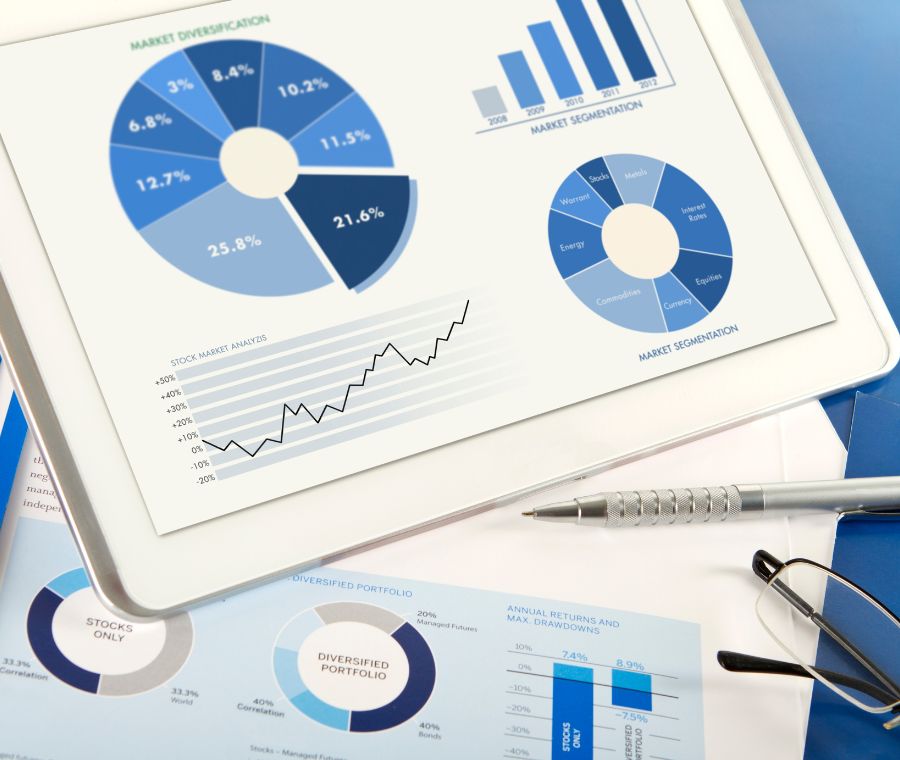
Types of Secured Personal Loans
Secured personal loans aren’t all structured the same way. While each one uses collateral to back the debt, the loan design and purpose can vary depending on what the borrower needs and how the lender structures repayment.
Below are the main types of secured personal loans based on how they function, not just what collateral is used.
1. Standard Secured Personal Loan
This is the most common type of secured personal loan. You borrow a lump sum, pledge an asset for security, and repay the balance in fixed monthly installments over a set period typically one to seven years. It’s flexible, straightforward, and can be used for nearly any personal expense, from consolidating debt to covering home or medical costs.
Best for: Borrowers who want predictable payments and lower interest rates compared to unsecured loans.
2. Credit-Builder Secured Loan
Credit-builder loans are designed to help borrowers establish or rebuild credit history. Instead of receiving the funds upfront, the lender holds the loan amount in a savings or certificate account while you make payments. When the balance is paid off, you receive the funds and a stronger payment record on your credit report.
Best for: Borrowers with limited or damaged credit who want a safe way to demonstrate consistent repayment.
3. Debt Consolidation Secured Loan
This option lets you combine several high-interest debts into a single secured personal loan with one monthly payment. By using collateral such as a car title or savings account, you can often lower your overall interest rate and simplify your repayment schedule.
Best for: Borrowers managing multiple credit cards or installment loans who want to reduce total interest and regain control.
4. Purpose-Specific Secured Loan
Some lenders structure secured personal loans for a specific goal like home renovations, weddings, or education costs. These are still personal loans, not home equity or student loans, but the funds are earmarked for a defined use. Collateral may be required for higher loan amounts or lower credit profiles.
Best for: Borrowers planning a large, defined expense who want a fixed rate and structured payoff plan.
5. Co-Signed or Joint Secured Loan
A co-signed or joint secured loan combines two forms of protection for the lender: collateral and a second borrower.
Adding a co-signer with strong credit can offset a weaker profile, while collateral further reduces risk. This structure often results in better rates or higher approval chances.
Best for: Borrowers with limited credit or income who can share responsibility with a trusted co-applicant.
📊 At a Glance: Common Secured Personal Loan Structures
| Loan Type | Purpose | Collateral Role | Ideal Borrower |
|---|---|---|---|
| Standard Secured Personal Loan | General-purpose borrowing | Required | Borrowers seeking flexible, lower-rate financing |
| Credit-Builder Loan | Establish or rebuild credit | Required | New or recovering credit users |
| Debt Consolidation Loan | Combine multiple debts | Required | Borrowers seeking lower total costs and simpler payments |
| Purpose-Specific Loan | Fund a defined goal (home, event, etc.) | May be required | Borrowers planning large, one-time expenses |
| Co-Signed / Joint Loan | Share repayment responsibility | Often required | Borrowers needing credit support or higher approval odds |
According to the Consumer Financial Protection Bureau (CFPB), secured personal loans can vary widely in terms, rates, and collateral requirements, so comparing lenders and reading disclosures carefully is essential.

How Secured Personal Loans Compare to Unsecured Loans
When deciding how to borrow, one of the first choices you’ll face is whether to take out a secured or unsecured personal loan. Both offer flexibility and fixed repayment terms but they differ sharply in how they’re approved, priced, and what’s at stake if things go wrong.
This section breaks down the key distinctions so you can match the right loan to your credit profile, financial goals, and comfort with risk.
Collateral Requirements
- Secured personal loans require collateral such as a savings account, car, or investment. The asset guarantees repayment and allows lenders to offer lower rates.
- Unsecured personal loans rely entirely on your credit score, income, and debt history, no collateral needed, but standards are higher.
Bottom line: If you have valuable assets but less-than-perfect credit, a secured loan can open doors that unsecured loans can’t.
Interest Rates and Borrowing Limits
Secured personal loans usually carry lower interest rates because the lender can recover losses through the collateral. They also tend to allow larger borrowing limits.
Unsecured loans, by contrast, charge higher rates to offset risk and often cap amounts at $30,000–$50,000.
Example: A borrower with fair credit might qualify for a $15,000 secured loan at 8% APR or only a $7,000 unsecured loan at 18%.
Approval Difficulty
Secured loans are typically easier to qualify for. Lenders weigh collateral value heavily, which can offset weaker credit or limited borrowing history.
Unsecured loans, however, require strong credit and a steady income record.
Tip: Even for secured loans, lenders still verify your ability to repay. Collateral helps, but it doesn’t replace sound financial proof.
Risk to Borrowers
The main trade-off:
- Secured loan: You could lose your collateral if you default.
- Unsecured loan: You keep your property, but your credit score can take a severe hit, and collection activity may follow.
A lost asset can be harder to replace than a damaged credit score, so weigh this risk carefully before applying.
📊 Quick Comparison: Secured vs. Unsecured Personal Loans
| Feature | Secured Personal Loan | Unsecured Personal Loan |
|---|---|---|
| Collateral Required | Yes — savings, vehicle, or investments | No |
| Interest Rates (APR) | 6% – 18% | 10% – 25% |
| Typical Loan Amounts | Up to $100,000 | Up to $50,000 |
| Approval Difficulty | Easier for fair/bad credit | Harder — credit-based |
| Funding Speed | 1–7 business days | 1–3 business days |
| Risk to Borrower | Loss of collateral if default occurs | Credit score damage only |
| Best For | Borrowers with assets and lower credit | Borrowers with strong credit, no collateral |
A secured personal loan makes sense when you want lower rates and can confidently back your loan with collateral. But if your credit is strong and you’d rather not tie up an asset, an unsecured personal loan may offer a simpler path even if it costs a little more.

Where to Get a Secured Personal Loan (and How to Compare Lenders)
Not every lender offers secured personal loans and even among those that do, the rules around collateral, approval, and cost vary widely.
Choosing the right lender means balancing trust, speed, and transparency while making sure your collateral and credit profile fit their requirements.
Below is a clear look at the main lender types, followed by a quick framework for comparing offers before you apply.
1. Banks
Traditional banks tend to offer some of the most competitive interest rates, especially for existing customers who already hold accounts or CDs with them.
- Typical collateral: Savings accounts, certificates of deposit (CDs), or investment portfolios.
- Pros: Lower APRs, well-regulated institutions, and relationship discounts.
- Cons: Stricter credit and income requirements; longer processing times.
- Best for: Borrowers with strong or moderate credit who value stability and predictable service.
Example: U.S. Bank and Wells Fargo both offer savings-secured personal loans with rates that are often half those of unsecured options.
2. Credit Unions
Credit unions are member-based and tend to be more flexible, particularly with borrowers rebuilding credit.
- Typical collateral: Share-secured loans (savings or certificates).
- Pros: Lower interest rates, higher approval odds for fair-credit borrowers, and personal service.
- Cons: Membership is required, and loan options vary by institution.
- Best for: Borrowers with fair or bad credit who prefer working with a community-focused lender.
Tip: Many credit unions also offer Payday Alternative Loans (PALs) small, secured loans designed to help members avoid high-cost payday lenders.
3. Online Lenders
Digital-first lenders have simplified the secured loan process. They’re often faster, more flexible, and available nationwide.
- Typical collateral: Vehicles, savings accounts, or valuables (depending on the lender).
- Pros: Fast application and funding often within 1–3 business days.
- Cons: Rates vary widely, and some online lenders aren’t well regulated.
- Best for: Borrowers who prioritize convenience, speed, and paperless management.
Caution: Avoid any lender that promises “guaranteed approval” or requests upfront fees before processing your loan. Legitimate lenders deduct costs from the loan amount, never ask for payment in advance.
Eligibility and Qualification Criteria for Secured Personal Loans
Even though collateral reduces a lender’s risk, approval for a secured personal loan still depends on more than just what you can pledge. Lenders want to see that you have a stable financial profile, consistent income, and a manageable level of debt.
Knowing what lenders evaluate and how to strengthen each area can make the difference between a quick approval and a rejected application.
1. Credit Score and Financial Profile
While secured loans are often easier to qualify for than unsecured ones, your credit history still matters.
- Prime lenders generally prefer scores above 650 and offer the lowest rates.
- Mid-tier lenders may approve borrowers between 580–649, especially with strong collateral.
- Subprime or alternative lenders may go as low as 500, but with higher rates and stricter terms.
💡 Tip: If your score is below 600, offer a stable, high-value asset such as a savings account or vehicle title. Solid collateral can offset weaker credit and improve your loan terms.
2. Debt-to-Income (DTI) Ratio
Your DTI ratio shows how much of your monthly income goes toward debt payments, a key indicator of repayment capacity.
- Ideal DTI: Below 40%
- Acceptable DTI: Up to 50% if backed by strong collateral or high income
Formula: DTI = (Total Monthly Debt Payments ÷ Gross Monthly Income) × 100
📊 Example: If you earn $4,000 a month and pay $1,200 toward debt, your DTI is 30%. That’s comfortably within most lenders’ limits.
Pro Tip: Pay down small balances before applying. Even a small drop in DTI (5–10%) can improve both approval odds and offered rates.
3. Income Stability
A predictable income stream reassures lenders that you can make consistent payments.
Common documentation includes:
- Recent pay stubs or tax returns (for W-2 employees)
- Bank statements showing steady deposits (for self-employed borrowers)
- Social Security, retirement, or pension records (for retirees)
💡 Insight: Some online lenders now use secure digital bank data to verify income a faster, more inclusive method for gig workers and freelancers.
4. Collateral Value and Verification
Your collateral determines not just approval, but how much you can borrow. Lenders usually require proof of ownership and may conduct an appraisal or value check.
| Collateral Type | Typical Loan-to-Value (LTV) | Verification Required |
|---|---|---|
| Savings / CD | 90%–100% of balance | Bank statement or account verification |
| Vehicle | 25%–75% of appraised value | Title, registration, insurance proof |
| Investments | 50%–70% of portfolio value | Brokerage or account statement |
| Valuables | 30%–70% of appraised value | Third-party appraisal or photos |
If the collateral’s value drops or isn’t easy to verify, the lender may offer a smaller loan amount or require additional assets.
⚙️ Example: Pledging a $10,000 savings account might yield a $9,000 loan (at a 90% LTV). The funds stay frozen until you finish repayment.
5. Documentation Checklist
Having documents ready before applying can speed approval by several days.
| Document Type | Purpose | Examples |
|---|---|---|
| Identification | Verify identity | Driver’s license, passport, or state ID |
| Proof of Income | Confirm repayment ability | Pay stubs, W-2s, 1099s, tax returns |
| Collateral Proof | Verify ownership/value | Car title, bank statement, investment report |
| Debt Details | Calculate DTI ratio | Loan statements, credit card balances |
| Employment Verification | Confirm work status | Employer letter, contract, or deposits |
📁 Tip: Organize clean digital copies of all required documents — most lenders allow secure uploads directly during the application.
6. What Strong vs. Weak Applicants Look Like
| Factor | Strong Applicant | Weak Applicant |
|---|---|---|
| Credit Score | 650+ with clean history | Below 600 with delinquencies |
| Income Stability | Consistent earnings, low DTI | Irregular income, high DTI |
| Collateral Value | Exceeds loan amount, easy to verify | Barely covers loan, hard to document |
| Documentation | All paperwork ready and accurate | Missing or outdated information |
| Debt Management | Low utilization, few active debts | Multiple high-balance loans or cards |
💡 Pro Insight: A strong application isn’t always about a high credit score — it’s about balance. Solid collateral, steady income, and organized documentation can often outweigh a few credit imperfections.

Common Challenges and How to Overcome Them
Even though secured personal loans are easier to qualify for than unsecured ones, approval isn’t automatic.
Lenders still assess your overall financial stability, not just the collateral you pledge. Understanding the most common challenges can help you plan ahead and strengthen your application before you submit it.
1. Can You Be Denied a Secured Personal Loan?
Yes. While collateral improves your chances, lenders can still decline your application if certain risk factors appear. The most frequent reasons include:
- Collateral Value Too Low: The asset doesn’t fully cover the requested loan amount.
- Poor Repayment History: Late payments or defaults on prior loans raise red flags.
- High Debt-to-Income Ratio: A DTI above 50% suggests limited repayment capacity.
- Insufficient Income: Irregular or unverifiable earnings make approval harder.
🧠 Pro Tip: Ask your lender for specific feedback if denied. Many are open to reconsideration if you strengthen one area such as offering higher-value collateral or providing extra proof of income.
2. How to Improve Your Approval Odds
You can often turn a “no” into a “yes” by addressing the right issues directly.
| Challenge | Why It Happens | Action Steps to Fix It |
|---|---|---|
| Collateral Value Too Low | Asset doesn’t fully secure loan | Offer stronger or additional collateral, or lower your loan request. |
| Poor Repayment History | Missed or late payments in the past | Make consistent on-time payments for 3–6 months before reapplying. |
| High DTI Ratio | Too much of your income goes toward debt | Pay down smaller debts or refinance existing loans. |
| Unstable Income | Irregular deposits or unclear employment | Provide additional income proof or a co-signer. |
| Low Credit Score | History of delinquencies or overuse of credit | Improve utilization, check reports for errors, or apply with a credit union that allows manual underwriting. |
💡 Example: Offering a $6,000 CD as collateral instead of a $4,000 vehicle can improve loan terms and lower your rate by several points.
3. When to Reapply After a Denial
If your application is denied, avoid reapplying immediately; multiple credit pulls within weeks can lower your score.
Instead, wait 30–60 days and use that time to:
- Pay down existing debt or credit card balances.
- Review your credit report and dispute any inaccuracies.
- Gather stronger documentation for income or asset value.
- Consider prequalifying with credit unions or flexible online lenders.
Reapplying with an improved profile shows progress and often results in better terms the second time around.
4. Use Prequalification to Your Advantage
Many lenders now offer soft credit check prequalification, which lets you preview rates, terms, and approval likelihood without affecting your credit score.
- Test your eligibility across multiple lenders safely.
- Compare APRs and repayment terms before committing.
- Identify which lenders value your collateral type most favorably.
Example: Prequalifying with three lenders might reveal one offering 7.5% APR for a savings-secured loan while another quotes 10.9% for the same asset all without lowering your credit score.
💬 Bottom Line: Secured personal loans reward preparation. By improving one or two key areas such as collateral strength or DTI you can often shift from borderline to approved in a matter of weeks. Treat the process like negotiation, not rejection: every “no” is simply data pointing to how to get your “yes.”
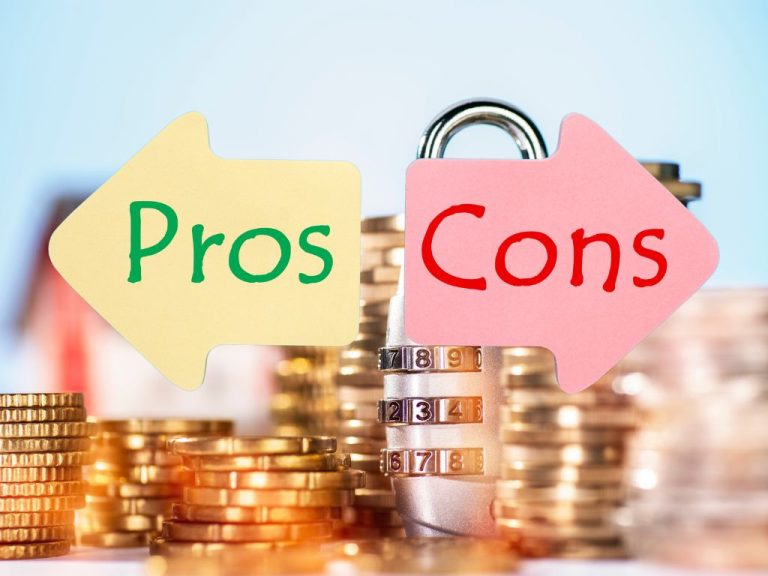
Pros and Cons of Secured Personal Loans
Secured personal loans can be a smart way to access affordable financing but they aren’t without risk.
By pledging collateral, you lower your borrowing costs and increase approval odds, yet you also place an asset on the line if repayment becomes difficult.
Here’s a clear breakdown of the benefits and trade-offs to consider before applying.
Advantages of Secured Personal Loans
1. Lower Interest Rates
Because collateral reduces lender risk, secured personal loans usually come with lower APRs than unsecured alternatives.
- Typical APRs range from 6%–12% for borrowers with stable collateral.
- Even borrowers with fair credit often qualify for single-digit rates.
- Over time, lower interest can save hundreds or even thousands in total cost.
💡 Example: A $10,000 secured loan at 8% costs roughly $440 less in interest over three years than a comparable unsecured loan at 12%.
2. Higher Borrowing Limits
Collateral allows lenders to approve larger loans since the asset serves as repayment security.
- Many lenders offer $50,000–$100,000 depending on collateral value.
- Ideal for major expenses like debt consolidation, medical bills, or renovations.
- The stronger and more liquid the asset, the higher your borrowing potential.
3. Easier Approval for Fair or Bad Credit
Secured loans are often accessible to borrowers turned down for unsecured loans.
- Approval is based more on collateral value and income stability than perfect credit.
- Many lenders accept scores in the 550–600 range if collateral fully covers the loan.
- These loans can also help rebuild credit through consistent on-time payments.
4. Flexible Repayment Terms
Secured personal loans typically offer longer repayment windows anywhere from 12 to 84 months allowing you to manage payments more comfortably.
Some lenders also allow early payoff without penalties, letting you save on interest if your situation improves.
Smart Strategy: Choose the shortest term you can afford, it balances affordability with lower total cost.
Disadvantages of Secured Personal Loans
1. Risk of Losing Collateral
If you default, the lender can seize and sell your pledged asset.
- This could mean losing your car, savings, or other property.
- Even after repossession, you may still owe any remaining balance if the sale doesn’t cover the loan.
- The default will also appear on your credit report, reducing your score significantly.
2. More Documentation and Verification
Because collateral must be verified, approval can take longer than with unsecured loans.
- Lenders may require asset appraisals, title checks, or account verification.
- Expect a timeline of 3–7 business days instead of same-day approval.
Tip: Have all ownership documents ready to avoid delays.
3. Potential Extra Fees and Restrictions
Even with lower interest rates, certain fees can raise the overall cost.
| Fee Type | Typical Range | Details |
|---|---|---|
| Origination Fee | 1%–5% | Charged upfront to process your loan. |
| Prepayment Penalty | Varies | Some lenders charge if you repay early. |
| Late Payment Fee | $25–$50 | Added for missed or delayed payments. |
📌 Pro Insight: Compare the APR (annual percentage rate), not just the interest rate — it includes all fees and shows the true borrowing cost.
💬 Balanced View: A secured personal loan works best when you have collateral you’re comfortable leveraging and a stable plan for repayment. The lower rates and easier approval can be powerful advantages, but the risk of asset loss makes these loans a tool to use carefully, not casually.
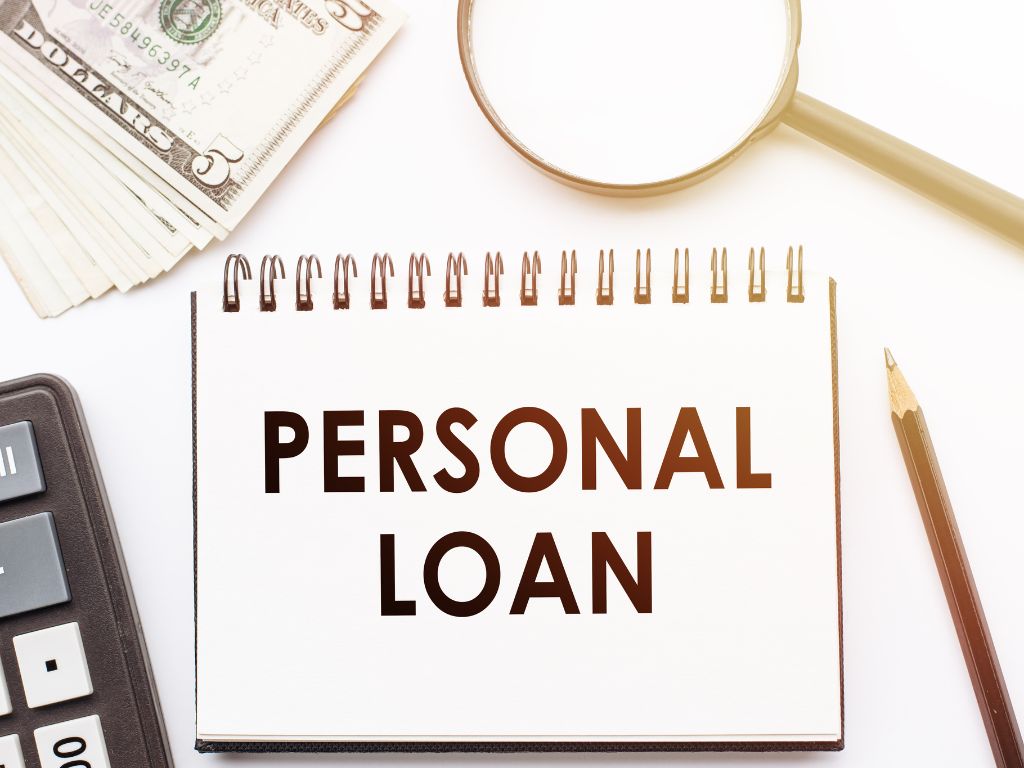
When a Secured Personal Loan Makes Sense
Secured personal loans aren’t the best fit for everyone but under the right conditions, they can be one of the most cost-effective and reliable ways to borrow.
The key is to understand when the trade-off between lower rates and collateral risk works in your favor.
Here are the most common situations where choosing a secured loan makes sense.
1. You Need to Borrow a Larger Amount
If you’re financing a major expense such as home repairs, medical costs, or consolidating multiple debts, secured loans often open access to higher borrowing limits.
- Typical loan sizes range from $25,000 to $100,000+, depending on collateral.
- Because the asset backs repayment, lenders are more willing to extend credit.
- You’ll also benefit from longer repayment terms (up to 84 months) and lower APRs than most credit cards or unsecured personal loans.
💡 Example: A borrower pledging a $25,000 savings account could qualify for a $20,000 loan at 7% APR something rarely available through unsecured lending unless credit is excellent.
2. You Have Fair or Limited Credit but Strong Collateral
For borrowers with credit scores under 670, unsecured loans can be expensive or unavailable.
Pledging collateral can close that gap by giving lenders the reassurance they need.
- Collateral such as savings, a vehicle, or investments can offset lower scores.
- Many lenders approve borrowers with scores between 550–600 when the collateral fully covers the loan.
- These loans can also serve as a credit-rebuilding tool if managed responsibly.
📌 Tip: A savings-secured loan is one of the safest ways to rebuild credit your own money backs the loan, minimizing default risk.
3. You Want to Minimize Long-Term Interest Costs
If you prioritize affordability over speed, secured loans almost always beat credit cards or other high-interest options.
- Average secured loan APRs are 30–50% lower than most unsecured credit products.
- Even a few percentage points saved in interest can translate to substantial long-term savings.
📊 Example: A $15,000 loan at 8% APR for 5 years costs about $3,250 in interest. At 15%, that same loan costs $6,425, nearly double.
4. You Prefer Predictable Payments and a Clear Payoff Date
Unlike credit cards or lines of credit, secured personal loans come with fixed monthly payments and set payoff terms.
This makes budgeting easier and prevents debt from stretching indefinitely.
If you’ve struggled with open-ended revolving credit before, a structured, fixed-term loan offers clearer financial control.
5. You Have a Valuable Asset You’re Comfortable Using
A secured loan only works if you’re willing to put the pledged asset at risk.
The best candidates are borrowers who can part with the asset temporarily, not those relying on it for daily needs.
Suitable examples include:
- A car that isn’t essential for work
- Savings you don’t plan to use in the near term
- Investments you can leverage temporarily for liquidity
⚠️ Caution: Never pledge your primary vehicle or only emergency savings unless you’re fully confident in repayment. Losing essential assets can create deeper financial challenges.
📋 Decision Matrix: Is a Secured Loan the Right Fit for You?
Your Situation, Why a Secured Loan Works, and When to Consider an Alternative:
| Your Situation | Why a Secured Loan Works | Better Alternative |
|---|---|---|
| You need $10,000+ for a major expense | Higher limits, lower APR | Unsecured personal loan for smaller needs |
| Credit score under 670 | Easier approval with strong asset | Credit union or co-signed loan |
| You want the lowest possible rate | Collateral reduces cost | 0% balance transfer or HELOC |
| You own valuable collateral | Can safely leverage it | Avoid if loss risk is too high |
| You want predictable payments | Fixed term = easier budgeting | Revolving credit for flexibility |
💬 Bottom Line: A secured personal loan makes sense when you have stable income, valuable collateral, and a clear repayment plan. It’s not just about getting approved, it's about using the loan as a tool to strengthen your finances, not strain them. Borrow strategically, protect your assets, and ensure every dollar you borrow moves you closer to long-term financial stability.
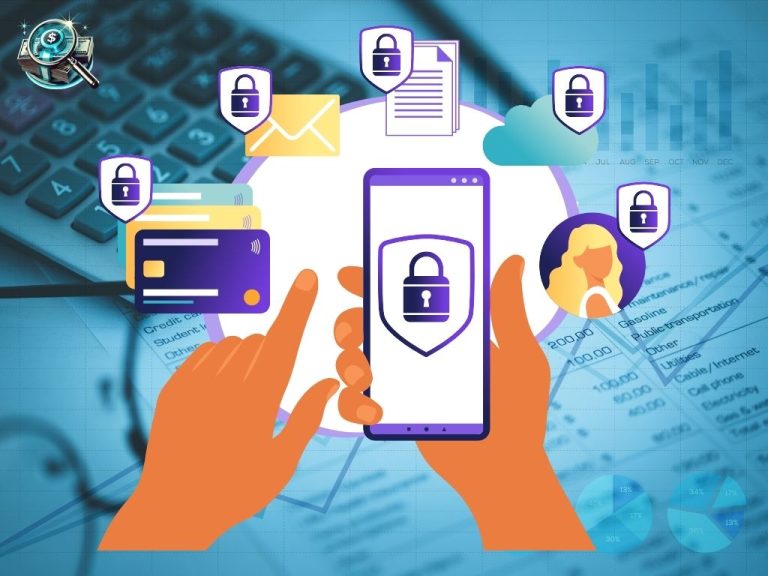
How to Apply for a Secured Personal Loan
Applying for a secured personal loan takes a bit more preparation than a standard unsecured loan mainly because you’re pledging an asset that must be verified and valued.
But with the right documents and a clear plan, you can move from application to funding in just a few days.
Follow these key steps to apply efficiently and improve your approval odds.
Step 1: Review Your Financial Readiness
Before applying, assess your overall financial position to determine if you’re ready to take on the loan.
- Check your credit score: Even though collateral helps, your score still influences rates.
- Calculate your debt-to-income ratio (DTI): Aim for under 40%.
- Evaluate repayment capacity: Make sure you could continue payments even if income fluctuates.
💡 Tip: If you’re stretching to afford monthly payments, reconsider the amount or look for lower-cost collateral options (like a savings-secured loan).
Step 2: Compare Lenders and Loan Options
Not all lenders offer secured personal loans, and the ones that do differ in accepted collateral, rates, and funding speed.
| Lender Type | Best For | Typical Collateral | Key Advantage |
|---|---|---|---|
| Banks | Borrowers with strong credit and existing accounts | Savings, CDs, or investments | Lowest interest rates and relationship discounts |
| Credit Unions | Members with fair or rebuilding credit | Savings or share-secured loans | Lower APRs and flexible underwriting |
| Online Lenders | Borrowers seeking convenience and speed | Vehicles, savings, or valuables | Fast approvals and digital management |
📌 Comparison Tip: Always compare APR (annual percentage rate) instead of just interest rate APR includes fees and provides the true cost of borrowing.
Step 3: Prepare Your Documentation
Being organized can speed up your approval by several days. Gather these documents before applying:
| Document Type | Purpose | Examples |
|---|---|---|
| Proof of Identity | Confirms who you are | Driver’s license, passport, or state ID |
| Proof of Income | Verifies ability to repay | Pay stubs, W-2s, or tax returns |
| Collateral Verification | Proves ownership and value | Vehicle title, savings statement, investment report |
| Debt Information | Shows current obligations | Credit card or loan statements |
| Employment Verification | Confirms work stability | Employer letter or recent deposits |
🧠 Pro Insight: Have clear digital copies ready to upload — most lenders allow online document submission, which accelerates review.
Step 4: Prequalify Before You Apply
Many lenders offer prequalification tools that use a soft credit check, letting you preview potential loan terms without impacting your credit score.
Use prequalification to:
- Compare rates and terms across multiple lenders.
- Identify which lenders value your collateral most.
- Avoid unnecessary hard inquiries that may lower your credit score.
💡 Pro Tip: Prequalify with at least two or three lenders one traditional and one online to compare options side by side.
Step 5: Complete the Application and Verify Collateral
Once you’ve selected a lender, complete the full application.
This typically involves a hard credit inquiry and asset verification:
- Savings-based loans: Funds are temporarily “frozen” until repayment is complete.
- Vehicle-based loans: The lender places a lien on the title until the loan is paid off.
- Investment-based loans: Collateral value is tied to current market performance.
⚙️ Note: The verification process protects both you and the lender ensuring the collateral truly matches the loan value.
Step 6: Review, Sign, and Receive Funds
Before signing, double-check all loan terms for accuracy and transparency:
- APR and total cost
- Monthly payment amount
- Repayment schedule and term length
- Any prepayment or late fees
Once signed, funds are typically deposited within 1–5 business days, depending on the lender.
Setting up automatic payments may earn a small discount (often 0.25%) and helps protect your credit score.
Step 7: Manage the Loan Responsibly
Repayment discipline is key to maintaining ownership of your asset and building credit.
- Set up autopay to avoid missed payments.
- Track balances through your lender’s dashboard or app.
- Pay extra toward principal when possible to reduce total interest.
- Contact your lender early if financial hardship arises many offer short-term deferment or restructuring options.
💡 Example: Making one extra payment per year can cut months off your term and save hundreds in interest.

Alternatives to Secured Personal Loans
Secured personal loans can be a great fit when you have valuable collateral and want access to lower interest rates.
But if pledging an asset feels risky or you simply don’t have one to use, there are other borrowing options worth considering.
The best alternative depends on your credit profile, urgency, and comfort with risk. Let’s break down the most practical options.
1. Unsecured Personal Loans
Unsecured personal loans are the most direct substitute for secured ones. They don’t require any collateral approval depends mainly on your credit score, income, and debt-to-income ratio (DTI).
Best for: Borrowers with solid credit who want quick approval and no asset risk.
Advantages:
- Fast approval (often same-day).
- No risk of losing property.
- Widely available through banks, credit unions, and online lenders.
Considerations: Rates are generally higher typically 10%–25% since lenders take on more risk. Borrowing limits may also be smaller.
💡 Tip: If your credit is fair but improving, look for prequalification options that let you check rates without affecting your score.
2. Credit Union Share-Secured or Payday Alternative Loans (PALs)
Credit unions offer member-based loans designed to compete with payday lenders but at much safer terms.
Some use your savings account (“share-secured”), while others provide small-dollar PALs without any collateral.
Best for: Members with limited credit or those rebuilding financial stability.
Advantages:
- Lower APRs (capped under 28% by federal regulation).
- More flexible approval standards than traditional banks.
- Repayments reported to credit bureaus, helping rebuild credit.
Considerations: Loan amounts are usually smaller ($200–$2,000), and you must be a member to qualify.
💡 Note: Many credit unions now allow membership through small donations, so joining is easier than most people think.
3. Home Equity Loans and HELOCs
If you’re a homeowner, you might access financing through the equity you’ve built in your home either as a lump-sum home equity loan or a revolving home equity line of credit (HELOC).
Best for: Homeowners with significant equity and predictable income.
Advantages:
- Low interest rates (often 6%–10%).
- Large loan amounts, up to 80–85% of home equity.
- Potential tax benefits if used for home improvement.
Considerations: Your home is the collateral. Falling behind on payments can lead to foreclosure. Also, these loans take longer to process, expect 1–3 weeks for approval and funding.
⚠️ Caution: Don’t use home equity to consolidate high-interest debt unless you’re confident in repayment you’re turning unsecured debt into secured, tied to your property.
4. Credit Cards or Balance Transfer Offers
Credit cards can fill short-term borrowing needs if you repay quickly or strategically manage a 0% balance transfer promotion.
Best for: Borrowers needing smaller, short-term funding who can repay within a few months.
Advantages:
- Immediate access to funds.
- Reward programs or 0% APR promos (for 12–18 months in some cases).
- No asset risk.
Considerations: Interest rates jump quickly after promo periods (often 20%+). Carrying balances long-term can snowball into expensive debt.
💡 Pro Tip: If using a balance transfer, repay aggressively before the intro rate expires to avoid retroactive interest charges.
5. Employer, Nonprofit, or Government Assistance
Before taking out any loan, it’s worth exploring low-cost or no-interest aid programs offered by employers, nonprofits, or local agencies.
Best for: Borrowers facing financial emergencies medical expenses, rent, or utilities.
Advantages:
- Often zero-interest or forgivable.
- Doesn’t impact credit.
- Provides breathing room during hardship.
Considerations: Eligibility may depend on your income or employment status, and funds can be limited.
💡 Where to Start: Check with HR departments, local community centers, or state assistance websites for verified programs before turning to high-cost lenders.

Conclusion
Secured personal loans can be a smart, cost-efficient way to access funding especially if you have valuable assets and want lower interest rates.
They offer flexibility for big financial goals, from consolidating debt to covering major expenses, while helping some borrowers rebuild credit along the way.
But that same benefit collateral-backed approval also carries responsibility. If repayment becomes difficult, the lender has the right to claim your asset, and the credit impact can be long-lasting.
That’s why the best approach to secured borrowing is strategic, not reactive.
Before you apply, ask yourself:
- Is my repayment plan realistic under all circumstances?
- Have I compared lenders, terms, and total costs?
- Can I afford to lose the asset I’m pledging if things go wrong?
If the answers point to confidence, a secured personal loan can help you borrow at lower cost, build financial credibility, and reach long-term goals responsibly. If not, there are safer alternatives to explore until you’re better positioned.
The smartest loans aren’t just affordable; they protect your stability while helping you move forward.
Looking for more insights? You may also want to check out our Secured Loans Guide for a broader understanding of secured loans and how they compare to other borrowing options.
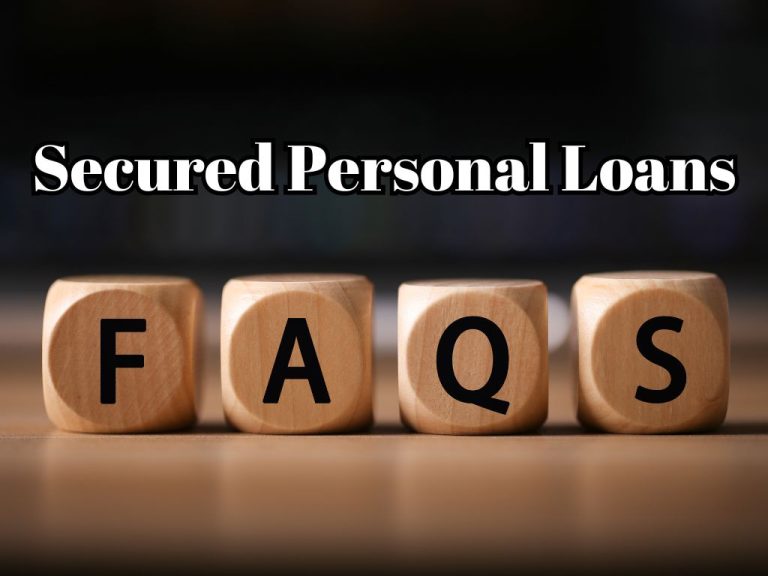
FAQs About Secured Personal Loans
What is a secured personal loan?
A secured personal loan is a loan that requires collateral, such as a car, savings account, or investments, to guarantee repayment. If the borrower fails to make payments, the lender has the right to seize the collateral to recover the debt.
Are secured personal loans hard to qualify for?
Not usually. They’re more accessible than unsecured loans because collateral reduces lender risk. You’ll still need to show steady income, manageable debt, and ownership of a qualifying asset.
What can be used as collateral?
Common forms include vehicles, savings accounts, CDs, and investment portfolios. Some lenders also accept non-traditional assets like valuable collectibles or equipment, though these may come with higher rates or shorter terms.
How much can I borrow?
Loan amounts depend on your asset’s value and the lender’s policy.
- Savings-secured loans: typically up to 90–100% of your balance.
- Vehicle-secured loans: about 70–80% of appraised value.
- Investment-backed loans: around 50–70% of portfolio value.
What happens if I can’t repay the loan?
Defaulting gives the lender legal rights to seize and sell your collateral. It also harms your credit score and may trigger collection efforts for any remaining balance. Always communicate with your lender early if repayment issues arise, many offer hardship options.
Do secured loans help build credit?
Yes, if payments are made on time. Lenders report your repayment history to credit bureaus, which can strengthen or rebuild your credit over time. Late or missed payments, however, can have the opposite effect.
How long does approval take?
Approval times vary by lender and collateral type.
- Online lenders: often 24–48 hours.
- Banks or credit unions: 3–7 business days, especially if an appraisal is needed.
Savings- or CD-secured loans tend to fund fastest since verification is simple.
Can I repay early without penalties?
Many lenders allow early repayment with no fees, but some charge a prepayment penalty to offset lost interest. Check the loan agreement before paying extra toward the balance.
Are secured loans a good option for bad credit?
Yes, they’re often one of the most practical options for borrowers with lower scores. Collateral lowers lender risk, improving approval odds and rates. Still, it’s critical to borrow responsibly; losing collateral can worsen your finances more than waiting to rebuild credit first.
What’s the main difference between secured and unsecured personal loans?
Secured loans require an asset as collateral and usually offer lower rates and higher limits. Unsecured loans rely solely on your credit and income faster to get but typically more expensive.
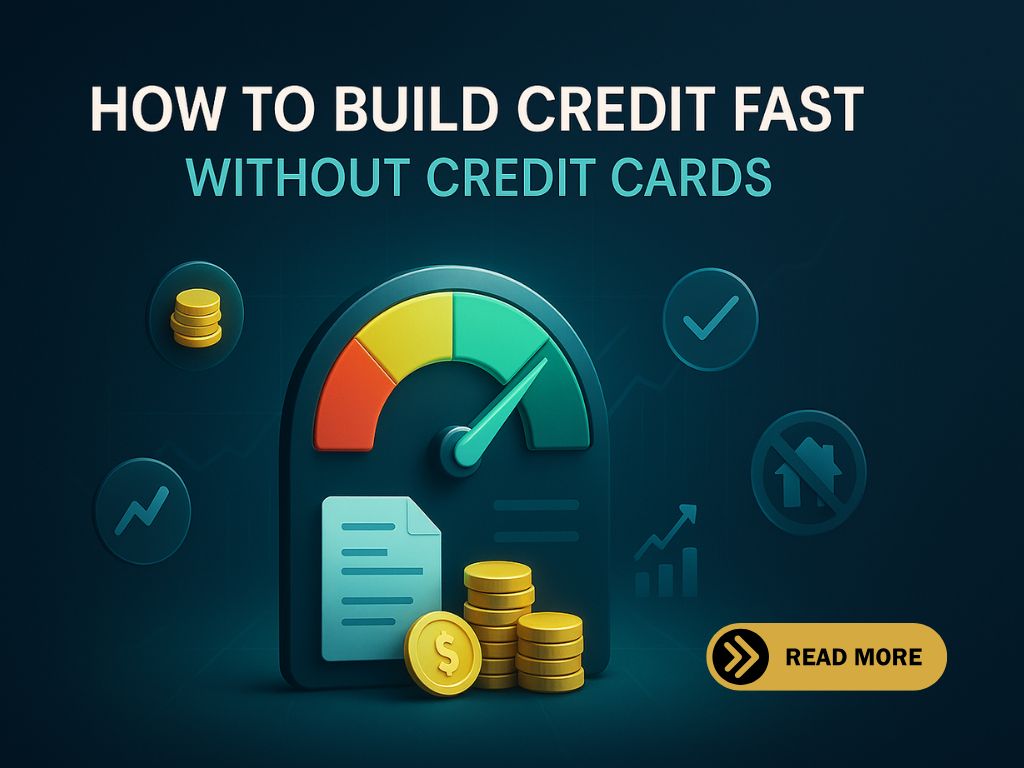



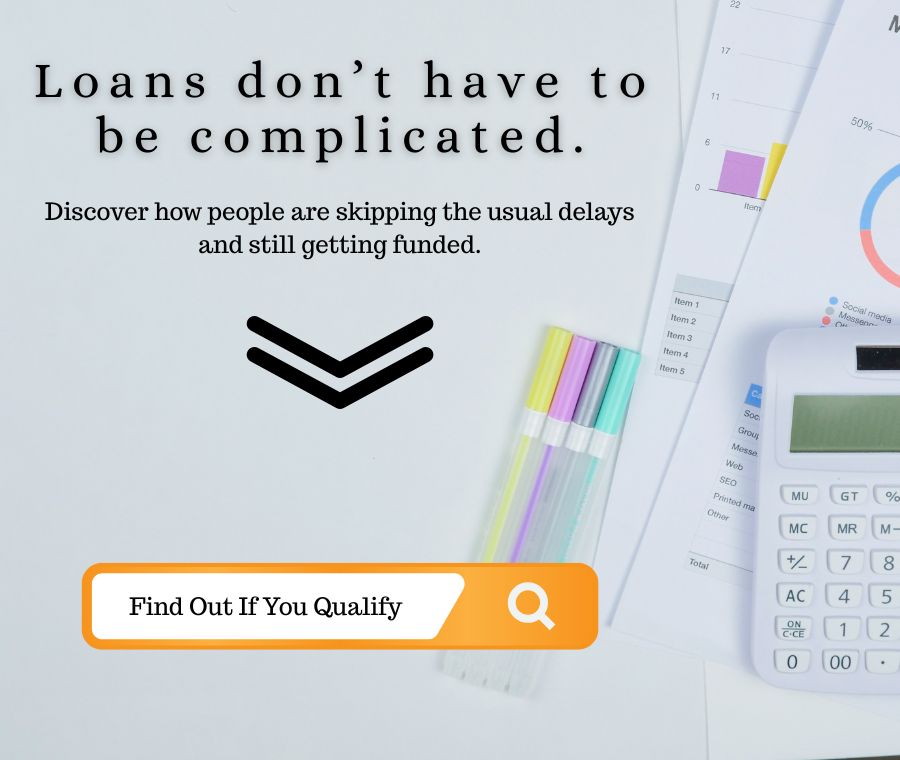


8 Comments
Personal Loan vs Line of Credit: Which Is Right for You? - Look Up Loans · March 23, 2025 at 2:59 am
[…] Which has lower interest rates?Personal loans usually offer lower fixed rates, especially for borrowers with strong credit. Lines of credit often come with variable rates that can increase over time. For lower interest rates check out our Secured Personal Loans Guide. […]
Secured Loans: What They Are and How They Work - Look Up Loans · March 28, 2025 at 2:57 am
[…] also put together a guide on how to choose the right secured personal loan if you’re considering […]
ITIN Loans: How to Qualify, Apply, and Get Approved Fast - Look Up Loans · April 5, 2025 at 10:37 pm
[…] Not sure this is the right path? Check out this option—it could be easier to qualify for. […]
Title Loans Explained: What You Must Know Before You Borrow - Look Up Loans · April 14, 2025 at 5:37 pm
[…] ➔ To learn more about safer collateral loans, read our guide on secured personal loans. […]
Emergency Car Title Loans: Fast Cash or a Dangerous Trap? - Look Up Loans · April 18, 2025 at 3:41 pm
[…] how secured personal loans work and how they compare to title […]
Personal Loans: Read This Before You Sign Anything - Look Up Loans · April 22, 2025 at 5:46 pm
[…] Read our full Secured Personal Loans Guide. […]
How to Get an Online Title Loan Fast (Without Getting Burned) - Look Up Loans · August 3, 2025 at 1:24 am
[…] Related: Explore how secured personal loans can give you lower rates with less risk of losing your […]
Secured Personal Loans for Bad Credit: Complete Guide - Look Up Loans · October 14, 2025 at 3:55 pm
[…] score falls below the “prime” range, many lenders see risk before potential. That’s where a secured personal loan changes the conversation. By offering collateral, you give the lender something tangible to offset […]